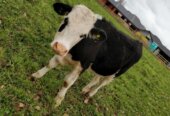A collaborate approach between three Waikato councils has been established to protect the country’s only native land mammals.
Pekapeka-tou-roa was a controversial, but clear winner of the 2021 New Zealand bird of the year and, are found throughout Waipā.
But the small nocturnal mammals – which have a lifespan of 20 years – are rarely seen, and the suburban growth which is being seen across all regions works against them.
The Waikato Bat Alliance and Waikato Regional Bat Strategy aims to provide a framework for mana whenua, councils and Department of Conservation to collaborate on bat habitat protection and restoration measures in the Waikato region, share resources, and align policies and planning.
The region is home to long tailed bats. A second species, the Lesser Short Tailed bats, is not found in Waipā, though some survive in the central North Island. It is thought the Greater Short Tailed bat is extinct.
In Waipā there are concentrations around Mt Pirongia and in the Maungakawa and Te Miro areas to the north east of Cambridge.
A comprehensive report on the strategy noted the bats were highly mobile and their home ranges were “landscape in scale”.
They required mature trees to roost and breed, darkness, productive foraging grounds, fly ways, predator control and large landscapes combining all those features.
In and around Hamilton, the home range of individual female bats is up to 1600 hectares and potentially larger than that
But a small increase in housing density from one house per hectare to around five houses results in a decline in bat activity by 42%.
Waikato-Tainui, which has also ben involved and contributed to the report, said planning for conservation needs to be long-term, a minimum of 50 years.
Bat knowledge is far from complete and there are significant gaps in understanding them.
“Bats are long-lived, more than 20 years, so they may persist in an area for decades. We can’t yet tell if the widespread presence of bats in the region is evidence they are flourishing or masking a decline in breeding success,” the report says.
“Unprecedented housing development pressure has revealed the gaps in current central government direction and inadequacies of existing local authority planning, policy and regulation to manage this conflict. Existing plans and policies were put in place when the range and needs of bats were even less known than they are now. As a result, planning and policy in the Waikato region are currently inadequate to protect bats and their habitat, and a case-by-case approach is being taken in assessing development proposals and resource consents.”









